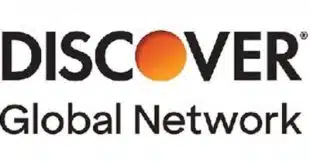Apple Inc. is bringing its Apple Pay service, originally restricted to apps and the Apple mobile wallet, to e-commerce sites on the Web.
Apple Pay on the Web will be available this fall as part of the iOS 10 mobile and macOS desktop software updates. “We wanted to bring the experience to the Mac,” Craig Federighi, Apple senior vice president of software engineering, said during a presentation Monday at Apple’s World Wide Developer Conference. The online Apple Pay version will be available for desktop and mobile Safari browsers.
Safari is a Mac-only browser that, according to data provider Net Applications, has a 16.93% market share, compared with Chrome, which is available on Mac devices and those using Microsoft Corp.’s Windows, at 40.84%, the most of any browser.
That may be a concern, Jordan McKee, senior analyst at 451 Research, says via email to Digital Transactions News. “Apple Pay on the Web requires the user to have both a Mac and a Touch ID enabled iPhone or Apple Watch and be using Safari, meaning the addressable market, while still large, is limited in size,” McKee says. “The multi device requirement also means there will be some added friction, compared to say PayPal One Touch or Visa Checkout.”
Shopping by mobile browsers outpaces apps, says Daniel Van Dyke, mobile analyst at Javelin Strategy & Research consultancy. “From that perspective, Apple’s going about this business backwards by first supporting mobile purchases at the point of sale. In fact, for every one dollar spent through mobile devices in the physical world, ten are spent through browsers,” Van Dyke says in an email to Digital Transactions News. “Apple providing its mobile device owners a trusted payment option through browsers will have a significant impact in driving total mobile online purchases to $116 billion in 2016.” Apple Pay launched as a contactless in-store payment service in 2014.
In a demonstration, Federighi showed a Web site with an Apple Pay button as a checkout option. He tapped it and was prompted to authenticate using the Touch ID button on an iPhone. The biometric reader verifies the consumer’s fingerprint scan. Apple says consumers can use their Apple Watch to authenticate themselves, too, with a tap on their wrist. Apple devices rely on a feature called Continuity that enables them to share data when in close proximity.
One slide during the presentation listed scores of retailers as participants, such as OpenTable, Toys R Us, Panera Bread Co., Etsy, and The Washington Post, which is owned by Amazon.com Inc. founder Jeff Bezos. Amazon has its own Pay with Amazon program for retailers. E-commerce platforms like Shopify, Demandware, and IBM plan to offer Apple Pay on the Web, too, an Apple spokeswoman says via email.
In a statement, Etsy chief executive Chad Dickerson says integrating Apple Pay into its app has produced “great results…and we’re excited to now be able to expand it to Etsy buyers on the Web.”
Apple, too, will compete with PayPal Holdings Inc., which offers a One Touch payment service for Web retailers. In particular, PayPal excels at mobile commerce with mobile volume hitting $21 billion in the first quarter. Some 21 million consumers have opted in to use PayPal’s One Touch service, which is available in 144 global markets.
Apple’s announcement will have a broad impact on e-commerce, but PayPal is clearly in Apple’s sights, McKee says.
“Apple is quickly building an omni-channel commerce strategy and encroaching on PayPal’s home turf,” he says. “PayPal, on the other hand, has been slow to evolve outside of the virtual domain.”
PayPal, for its part, says in a statement it welcomes “any developments that help people move away from the awkwardness of cash. PayPal is more more than a way to checkout online or digitally pay back your friends.”
PayPal highlighted the work it does already with Apple. “We currently work with Apple to help people make purchases on Apple.com and iTunes, provide credit services and allow merchants to accept Apple Pay transactions via Braintree. Our device-agnostic and operating system-agnostic platform is robust and agile, and combines with risk and data analytics capabilities that can deliver truly differentiated offerings such as PayPal Credit, One Touch and Contextual Commerce.”
One analyst considers the inclusion of biometric authentication in Apple Pay for the Web as vital. “Biometrics are the future of credit card security,” Matt Schulz, senior analyst at CreditCards.com, says in a statement reacting to Apple’s announcement. “There’s simply too much money at stake for banks, retailers, and consumers to continue to rely on old-fashioned security methods like passwords.”
Online Apple Pay also has the potential to help counter online fraud stemming from the use of EMV chip cards at the point of sale. “Adding EMV chips to credit cards made it safer to use your card in person at the checkout counter but didn’t help at all with online purchases,” Schulz says. “That made online shopping sites an even more appealing target for bad guys.”




